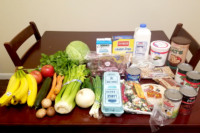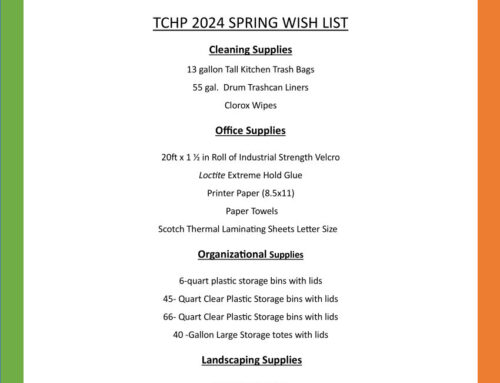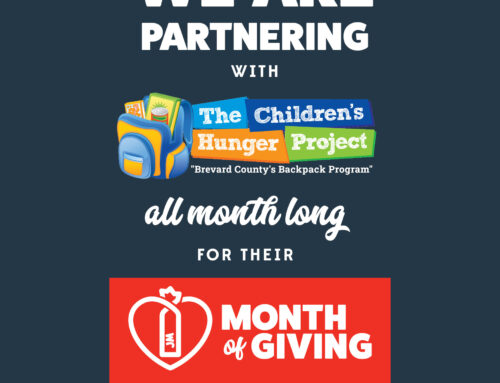 Imagine going into a supermarket knowing that you have only $30 for a week’s worth of food. You make your way along the aisles carefully comparing prices, rejecting canned beans for the cheaper dried ones, and substituting chicken drumsticks for pricey boneless breasts. You fret over the high prices in the produce aisle and wonder if you’ll have to get through the week with no fruit and veggies at all. This is an ongoing reality for many Americans who live on SNAP, formerly known as food stamps.
Imagine going into a supermarket knowing that you have only $30 for a week’s worth of food. You make your way along the aisles carefully comparing prices, rejecting canned beans for the cheaper dried ones, and substituting chicken drumsticks for pricey boneless breasts. You fret over the high prices in the produce aisle and wonder if you’ll have to get through the week with no fruit and veggies at all. This is an ongoing reality for many Americans who live on SNAP, formerly known as food stamps.
For one week, it was also a reality for many people who have no budget problems, including politicians, bloggers, celebrities, and a corporate CEO. They deliberately chose to live for a week on a SNAP budget to call attention to the problems of people receiving food aid.
The SNAP Challenge, gained national attention when four members of Congress – Representatives James McGovern, Jo Ann Emerson, Jan Schakowsky, and Tim Ryan – spent a week on a food stamp budget and blogged about the experience. Their goal was to encourage Congress to increase food stamp benefits. Since then, hundreds more people have taken the SNAP Challenge to spread awareness about SNAP. Though the challenge isn’t perfect, it gives you a sense of just how difficult it is.
Won’t you join us this summer, and share your experience? Pick any week from June 1 – August 10 and use the hashtag #childrenshungerprojectsnapchallenge
Rules of the SNAP Challenge
Eat for one week on a SNAP budget, a budget of $4.15 per person, per day, or $29.05 per week per person, which is the average daily allowance for SNAP beneficiaries.
Track Your Spending. Keep track of how much you spend on groceries throughout the week. If you eat out at all during the week, the money you spend on that must also come out of your SNAP budget.
Don’t Shop Your Pantry. It’s okay to eat food you already have at home, but you must take money out of your budget to pay for it.
No Freebies. Accepting free food from family, friends, or coworkers isn’t allowed, since freebies aren’t always available to people living on SNAP. That means you can’t let your friend treat you at Starbucks or take a doughnut at a workplace meeting. If you do accept any free food, you should deduct money from your budget for that as well.
Many participants say that eating on a SNAP budget for just one week made them more sympathetic to those who have to do it on a day-to-day basis. At the same time, the challenge made participants feel grateful for the foods they enjoy every day without thinking about it. They gained a new appreciation for little things like a cup of coffee, a meal out with friends, or even just a bowl of cereal. At the very least, you’ll use your creativity and save some money which can be used as a donation to feed hungry kids locally.
Share your experiences as you take part in the Challenge. Use Facebook, Twitter, and blogs to post regular updates on your progress. Some particularly well-known individuals and organizations have spread the word through the mainstream media as well, discussing their experience on television and writing columns for newspapers.
Since 2007, many people have taken part in the SNAP challenge and have written or spoken to the media about their experiences. The best-known participants include Newark mayor Corey Booker, who is now a U.S. senator; Ron Shaich, the CEO of the Panera Bread restaurant chain; and actress Gwyneth Paltrow. Various other politicians, bloggers, and activists have taken the challenge too.
One surprising problem for many participants was how socially isolating it is to eat on a strict budget when those around you aren’t. McGovern says he had to “just drink tap water” at a fundraising dinner, and Shaich says he “canceled two scheduled dinners, knowing they were way beyond my budget.” Cimini says after a day “spent running errands with a friend,” she was unable to join her friend for dinner as she normally would, and she missed her Sunday morning breakfast out with her sister.
Click here for a more in-depth description of the SNAP challenge.






